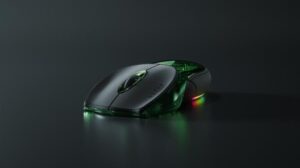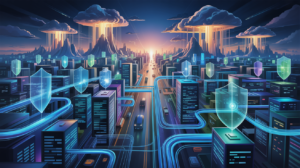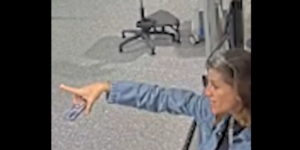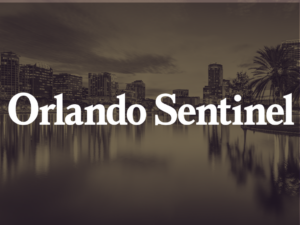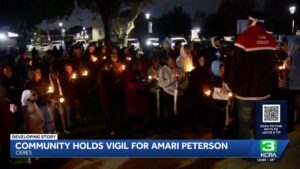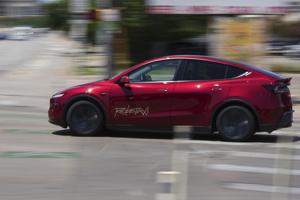
Tesla Inc. is unlikely to launch its much-anticipated robotaxi service in San Francisco within the next few months, despite assertions from Elon Musk. The company currently lacks the necessary permits to operate fully autonomous vehicles in California, where it has not even initiated the application process. This delay contrasts with its ongoing operations in Austin, Texas, where Tesla has begun limited testing of its autonomous vehicle service.
A significant barrier remains: state officials have confirmed that Tesla has not applied for the required regulatory permits. According to Billy Riggs, a professor at the University of San Francisco who specializes in autonomous vehicle regulations, the company may not be able to offer a service comparable to its Austin operations until late 2025. Riggs noted, “Realistically, I don’t see a pathway to launch in under a year.”
The introduction of a commercial robotaxi service would create competition for existing players such as Waymo, which currently operates the only autonomous taxi service in San Francisco, as well as ride-hailing giants Uber and Lyft. Yet, Tesla’s application process could face considerable opposition from local officials and residents. Following the launch of autonomous services by Waymo and Cruise in 2023, many community members raised concerns about safety.
While Waymo continues its operations, Cruise suspended its service after a serious incident in which one of its vehicles struck and seriously injured a pedestrian. Additionally, Tesla has been under scrutiny due to regulatory investigations concerning accidents related to its Autopilot and Full Self Driving systems. It is essential to clarify that these features are categorized as driver-assistance technologies, not fully autonomous systems.
In August 2023, Tesla began a limited trial of its robotaxi service in Austin, using approximately ten Model Y vehicles in a controlled area, accessible only to a select group of participants. Musk has been vocal about his plans to expand the service to California, stating earlier this month, “We’re waiting on regulatory approvals, but probably in a month or two.” However, the exact nature of these “regulatory approvals” remains unclear, and requests for clarification from Tesla representatives have gone unanswered.
California’s regulatory landscape for autonomous vehicles is governed by two primary agencies: the Department of Motor Vehicles (DMV) and the California Public Utilities Commission (CPUC). The DMV is responsible for ensuring the safety of vehicles and their self-driving systems, while the CPUC oversees the safety and fairness of the services offered to the public.
The DMV’s licensing program includes two distinct permits: one that mandates a driver in the seat and another that allows for the operation of driverless vehicles. Each permit is categorized into testing and deployment levels. Companies like Waymo and Cruise have successfully navigated a three-step process involving initial testing with safety drivers, followed by trials without drivers, before obtaining permission for broader deployment.
While Tesla holds a DMV permit to test self-driving cars with an operator present, it has not utilized that permit since 2019. Furthermore, Tesla has not submitted any disengagement reports—required documentation detailing instances when a vehicle’s autonomous systems are disabled—since at least 2020. This lack of reporting raises questions about the company’s commitment to transparency in its testing processes.
As of the latest updates, Tesla has yet to apply for a permit to test driverless vehicles in California, a crucial step in launching its robotaxi service. Bryant Walker Smith, a legal expert on autonomous vehicles at the University of South Carolina, emphasized the importance of this application process. “First you have to apply,” he stated, adding that any delays would be Tesla’s responsibility.
The CPUC’s permitting process also involves multiple layers. Companies wishing to offer robotaxi services must obtain a transportation charter-party carrier permit, allowing them to charge for rides. To do so, they must first receive authorization for their self-driving vehicles from the CPUC. Companies can offer rides without charging if they possess a testing permit from the DMV, but charging for rides necessitates additional steps.
Before a company can begin offering rides to passengers, it must demonstrate at least 30 days of self-driving capabilities in California after receiving either a testing or deployment permit. The CPUC has up to 300 days to review applications, during which it may request further documentation or modifications. Following this review, a draft response is published, initiating a 20-day public comment period before any final decision is made.
For context, both Waymo and Cruise submitted applications in December 2022 to expand their paid services across San Francisco. The CPUC ultimately approved these applications in August 2023, after extensive testing was completed.
Recently, Tesla secured a charter-party carrier permit from the CPUC, yet has not applied to offer passenger services in autonomous vehicles, either with or without drivers. Riggs remarked, “It’s a bit of an overstatement to say this could happen in [one to two] months from a permitting standpoint.”
Even if Tesla successfully navigates the application process, skepticism from state agencies, particularly the DMV, is likely. Tesla’s system relies predominantly on visual-light cameras, a less comprehensive approach compared to competitors that utilize a combination of sensors, including radar and lidar, to ensure passenger safety.
As Bryant Walker Smith pointed out, the DMV will likely examine Tesla’s historical performance when evaluating its readiness for driverless testing. Given that Tesla has not been filing regular reports, the company lacks the data necessary to substantiate claims of its autonomous systems’ safety. “Tesla has, through its own decisions, deprived the public, deprived DMV, and ultimately deprived itself of the credible data that it would need to make that argument,” Walker Smith concluded.
In conclusion, while Tesla’s vision for an autonomous robotaxi service in San Francisco is ambitious, a myriad of regulatory hurdles and community concerns stand in its way, delaying what many hoped would be a rapid rollout.
